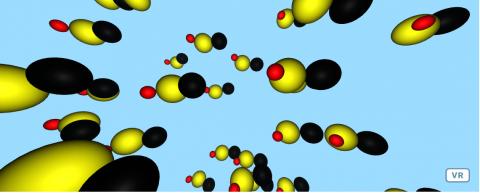
UNH is New Hampshire's flagship research university. In spring 2020, COVID-19 forced the university to shutter research labs and classrooms, halting progress on many projects.
During this time, Enterprise Technology & Services (ET&S) turned the Research Computing Center's Virtual and Augmented Research Lab (AR/VR) into an exploratory hub to empower educators, students and researchers to collaborate in virtual spaces when they could not work together in person.
The goal was to explore AR/VR capabilities that could promote remote learning and research, from enhancing all aspects of the student experience to visualizing complex research activities and datasets. This work benefitted the university by creating new pathways for research and education to continue during unprecedented times of physical separation.
One example of work that was created in the AR/VR Lab both before COVID-19 and during the pandemic is the Parpak Project. Professor John Tsavalaswas an early adopter of the AR/VR Lab when it first opened. Tsavalas is currently working with Professor Robert Carrier on the Parpak Project, using trimers to model antibodies and their movements. Of particular interest to the researchers is trying to discover why these molecules are prone to clumping together. Previously, this modeling had been done on an x-windows display, which involved giving the program various commands to rotate the data that they were trying to analyze. This made looking at the data difficult and tedious.
ET&S was able to take data points from the project and plot them in 3D space using the A-Frame WebVR framework. With the help of Virtual Reality Lab headsets, Tsavalas and Carrier are now able to explore their data by flying through an animated model in full 3D.
This helps them get up closer to the models and have a better understanding of how they are moving in 3D space.


